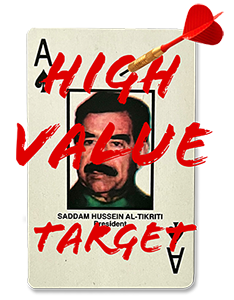
THE ROAD TO EXPELLING HUSSEIN'S GRIP OVER IRAQ
THESIS
In 2003, after heavy debate in the U.N. on what should be done about the threat of dictator Saddam Hussien, the U.S. and U.K. made the choice to justifiably end diplomacy with Iraq to prevent his terrorism from rising any further.
Naia Montes
Individual Junior Division Website
Student Composed Words: 1,194
Process Paper Words: 497
Media Length: 2:55

Dictator Saddam Hussein had shown himself to be a threat leading up to the start of the war. When in power before the early 2000s, the Iraqi government attacked its own people with chemical weapons, tortured and raped them, and burned hundreds of oil wells in Kuwait, absolutely devastating the lives of thousands.
The U.N. started to investigate Iraq after passing SCR (Security Council Resolution) 687 in 1991 which forced Iraq to “destroy all of its chemical, biological and nuclear weapons capability as well as missiles with a range of more than 150 kilometers and to allow verification by inspectors.” Although Iraq accepted this decision, when the U.N. started investigations, Iraqis shot at inspectors trying to prevent them from checking vehicles that were rumored to contain nuclear equipment.

Before the decision was made by the U.S. and U.K., there was much debate during the United Nations Emergency Summit on Iraq. The big question was what should be done about Saddam’s increasing non-compliance with inspections.
Interview with Abiud Montes, Master Gunnery Sergeant USMC, Retired